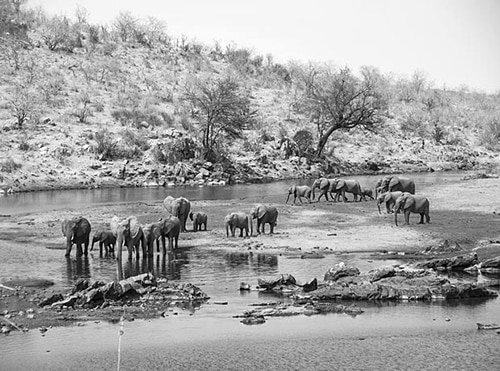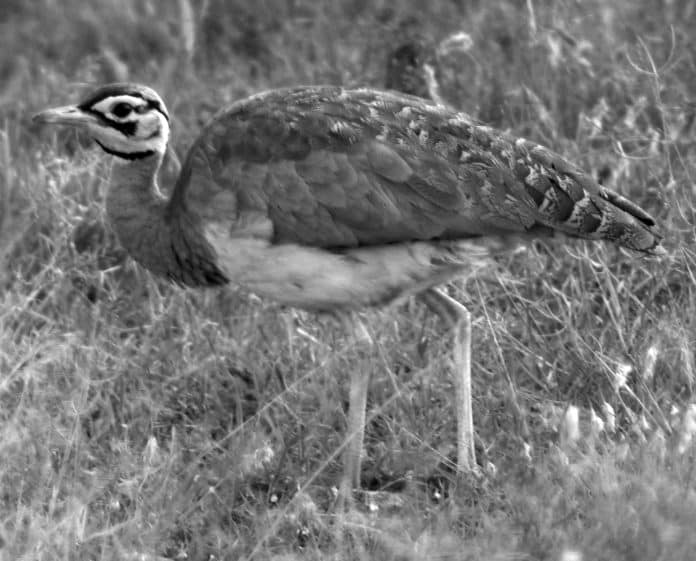White-Bellied Bustard in Tanzania: Graceful Runners of the Savannah
Introduction to the White-Bellied Bustard
The White-Bellied Bustard is a magnificent bird species found in Tanzania, specifically in the vast savannahs of this beautiful African country. With its elegant appearance and unique running abilities, the White-Bellied Bustard in Tanzania is a true marvel of nature. In this article, we will delve into the habitat, physical characteristics, behavior, and conservation status of this remarkable bird. Join us on this journey as we explore the world of the White-Bellied Bustard in Tanzania.
Habitat and Distribution of the White-Bellied Bustard in Tanzania
The White-Bellied Bustard is primarily found in the grasslands and open savannahs of Tanzania. These birds thrive in habitats with a mix of tall grasses and scattered shrubs, which provide them with both cover and ample food sources. Their distribution spans across various regions of Tanzania, including the Serengeti, Tarangire, and Ruaha National Parks. The abundance of insects and small vertebrates in these areas makes them ideal hunting grounds for the White-Bellied Bustard.
Physical Characteristics and Behavior of the White-Bellied Bustard
The White-Bellied Bustard is a medium-sized bird, measuring around 50-70 centimeters in length. It has a distinctive appearance, with a white belly, black and white barred wings, and a long, slender neck. The males are slightly larger than the females and exhibit more elaborate plumage during the breeding season. These birds are known for their graceful running abilities, which allow them to cover large distances on foot. They have strong legs and feet, well-adapted for traversing the grasslands with ease.
In terms of behavior, the White-Bellied Bustard is primarily diurnal, meaning it is active during the day. They are often seen foraging for food on the ground, using their keen eyesight to spot insects, small reptiles, and even seeds. During the mating season, males engage in elaborate courtship displays to attract females. These displays involve puffing up their feathers, making deep booming calls, and performing intricate dance-like movements. The White-Bellied Bustard is a solitary bird, only coming together in small groups during the non-breeding season.
Conservation Status and Threats to the White-Bellied Bustard Population
The White-Bellied Bustard faces several threats to its population in Tanzania. Habitat loss due to human activities, such as agriculture and infrastructure development, is one of the primary concerns. As grasslands are converted into farmland or urban areas, the suitable habitats for the White-Bellied Bustard diminish. Additionally, the illegal hunting of these birds for their feathers and as trophies poses a significant threat to their survival. Climate change also poses a risk, as it can disrupt the delicate balance of the ecosystems they inhabit.
To address these challenges, conservation efforts are crucial. Organizations and government agencies are working towards preserving the habitats of the White-Bellied Bustard and implementing measures to control illegal hunting. Awareness campaigns and education programs are also essential to promote the importance of protecting these birds and their habitats. By actively participating in these initiatives, we can help ensure the survival of the White-Bellied Bustard in Tanzania.
Unique Features of the White-Bellied Bustard’s Running Ability
One of the most fascinating aspects of the White-Bellied Bustard is its exceptional running ability. These birds are known for their agility and speed on the ground. Their long legs and strong muscles allow them to cover vast distances in search of food and mates. The White-Bellied Bustard’s running style is characterized by graceful, fluid movements, making them a true spectacle to observe. Their running technique also helps them evade predators, as they can quickly take flight if threatened.
What sets the White-Bellied Bustard apart from other bird species is its ability to change direction rapidly while running. This agility allows them to navigate through the dense grasses of the savannah without losing momentum. It is truly a sight to behold, watching these birds effortlessly glide through their natural habitat. This unique running ability is a testament to the White-Bellied Bustard’s adaptability and survival skills.
Observing the White-Bellied Bustard in the Tanzanian Savannah
If you’re interested in observing the White-Bellied Bustard in its natural habitat, the Tanzanian savannah offers excellent opportunities. The best time to spot these birds is during the dry season, when the grass is shorter, making it easier to see them from a distance. Early mornings and late afternoons are the most active times for the White-Bellied Bustard, as they search for food and engage in courtship displays.
When observing these birds, it is essential to maintain a safe distance and avoid disturbing their natural behavior. Binoculars or a telephoto lens can come in handy for a closer look without causing any interference. Patience is key, as the White-Bellied Bustard may blend into the surrounding vegetation and require some time to spot. Remember to respect their habitat and enjoy the privilege of witnessing these graceful runners in their natural environment.
Best Locations for Spotting the White-Bellied Bustard in Tanzania

Tanzania is blessed with numerous locations where you can spot the White-Bellied Bustard in all its splendor. The Serengeti National Park is undoubtedly one of the best places to witness these birds in action. The vast grasslands and abundance of prey make it an ideal habitat for the White-Bellied Bustard. Other national parks such as Tarangire and Ruaha also offer excellent opportunities for sightings, as they provide a similar habitat and are less crowded than the Serengeti.
Within these parks, certain specific areas have a higher concentration of White-Bellied Bustards. The Seronera region in the Serengeti is known for its large population of these birds, making it a hotspot for sightings. In Tarangire National Park, the Silale Swamp is an excellent location, as it attracts a variety of bird species, including the White-Bellied Bustard. Exploring these areas with the guidance of experienced local guides will greatly increase your chances of spotting these magnificent birds.
Tips for Photographing the White-Bellied Bustard
Capturing the beauty of the White-Bellied Bustard through photography can be a rewarding experience. Here are some tips to help you capture stunning images of these birds in their natural habitat:
- Use a telephoto lens: The White-Bellied Bustard is known for its ability to blend into the surroundings. A telephoto lens will allow you to get a closer shot without disturbing their behavior.
- Be patient and observant: Spend time studying the behavior of the White-Bellied Bustard to anticipate their movements. Patience will reward you with the perfect shot.
- Pay attention to lighting: The early morning and late afternoon light can create a beautiful golden glow on the feathers of the White-Bellied Bustard. Take advantage of these magical moments to enhance your photographs.
- Experiment with angles: Try capturing the White-Bellied Bustard from different angles to showcase their elegant appearance and running abilities. Low angles can emphasize their speed and agility.
Remember, the goal is to capture the essence of these birds without causing any disturbance or stress. Respect their habitat and always prioritize their well-being over any photograph.
Conservation Efforts and Initiatives for Protecting the White-Bellied Bustard
Conservation efforts are crucial for protecting the White-Bellied Bustard and ensuring its survival in Tanzania. Several organizations and initiatives are actively working towards safeguarding these birds and their habitats. Through research, education, and community engagement, these efforts aim to raise awareness and promote sustainable practices.
Local communities play a vital role in the conservation of the White-Bellied Bustard. By involving them in decision-making processes and providing alternative livelihood options, conservation initiatives can create a positive impact on both the birds and the communities. It is essential to foster a sense of pride and ownership among the local population to ensure the long-term success of these conservation efforts.
Appreciating the Beauty and Significance of the White-Bellied Bustard in Tanzania
The White-Bellied Bustard is not only a remarkable bird species but also an integral part of the Tanzanian ecosystem. Its graceful running abilities and unique appearance make it a true gem of the savannah. By understanding and appreciating the beauty and significance of the White-Bellied Bustard, we can contribute to its conservation and ensure its presence in Tanzania for generations to come.
For more articles related to Wildlife in Tanzania (Animals), click here!

































